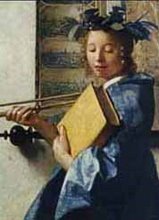Depending on the purpose, Orange, Green, and Purple can be greater colors than Red, Yellow, and Blue. For the sake of this post, I will treat these three colors as greater and explain why. Yes, I realize that if you draw and color-in a circle with a Yellow crayon and then color over that same circle with a Blue crayon, you will undoubtedly end up with the color of Green. But that means that it takes two different crayons to create that third color. Therefore, 1+1=3. However, because there are two 1's it suggests that the 1's are the exact same and equal, when in actuality the 1's in 1+1 are two completely different colors and in no way related and no way equal other than they belong to the family of colors, because Red and Yellow, and Blue are Prime Colors (Primary).
If I had to select two crayons, I might select two of the colors out of Orange, Green, and Purple. The reason being that each alone is comprised of three different colors. Orange, for example, can be Orange, or you can break it down into Red and Yellow. Therefore, 1/anything = 2
What is interesting to me is that if you select two out of these three colors (Orange, Green, and Purple) you would yield five out of six different colors. For example, if you selected Orange and Green, you would have Orange, Red, and Yellow and Green, Blue, and Yellow.
But what is even more fascinating is that using the same example listed in the previous paragreaph, with Orange and Green, you can actually create all six colors. The first five colors would come from the breakdown of Orange and Green as listed in the previous paragraph. The sixth color (Purple in this case) comes from assessing those five colors listed above. You will find that you can create Purple from the breakdown of Orange and Green, by combining Red and Blue.
Sunday, February 04, 2007
Subscribe to:
Post Comments (Atom)


No comments:
Post a Comment